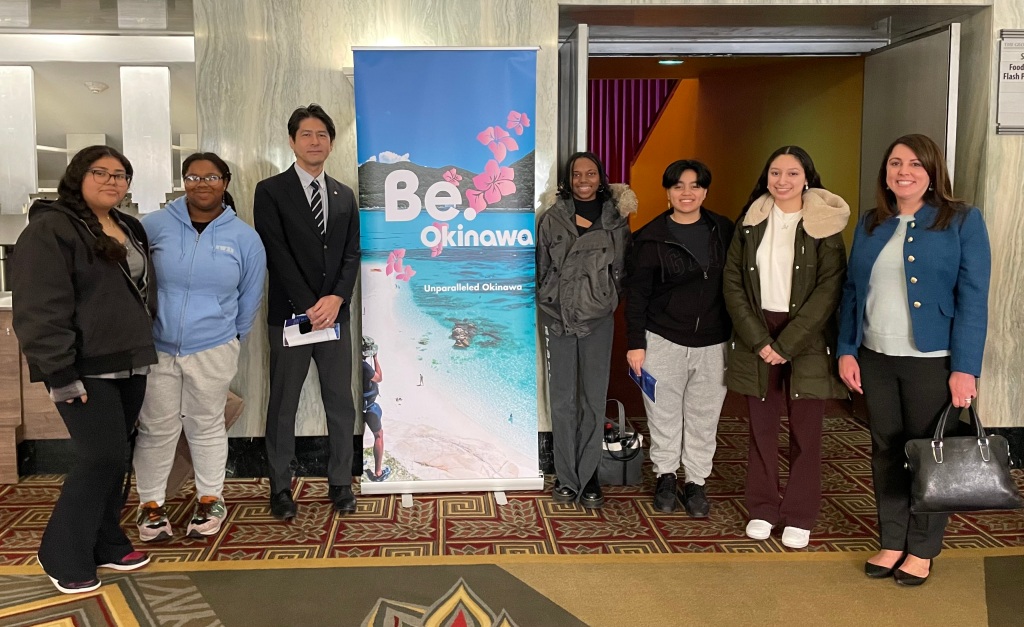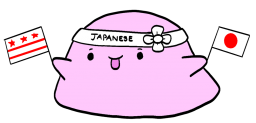
By Chamiya Carnathan
Have you ever experienced a musical in another language? On January 13th, 2024, I had the privilege to watch “The Little Mermaid” in Japanese.
Last November, the Director of the Okinawa Prefecture Office in DC, Mr. Kazuyuki Nakazato, invited Sally Schwartz and me to attend an Okinawan performance called The Heart of Ryukyuan Dance. Then last week, Mr. Nakazato gave Sally and some Japanese Plus students another opportunity to attend a performance called “Mermaid of the Blue Sea,” located at Lisner Auditorium. Adapted from Hans Christian Andersen’s The Little Mermaid, the performance featured Okinawan traditional dance and performance styles. I absolutely loved the performance.
In The Little Mermaid, Hans Christian Andersen introduces a young mermaid princess who falls in love with a prince she saves from drowning. Seeking a chance to be with him, she makes a pact with a sea witch and trades her voice for human legs. However, Ariel will feel constant pain and will only survive if she wins the love of the prince and marries him. Despite captivating the prince, he marries another, unaware of Ariel’s sacrifice. Heartbroken, Ariel faces an ultimatum from the sea witch: kill the prince to revert to a mermaid or face death and become seafoam. Ariel chooses not to harm the prince, embracing her fate.
The Okinawan rendition of The Little Mermaid presented a unique musical experience. Despite the language barrier, the performers’ utilization of items, such as Sensu fans, was flawless. These fans were ingeniously used to represent ocean waves and various sea animals. The musicians were amazing, playing a musical score that effectively conveyed the intended emotions. The music, which was exquisitely melancholic, created a build-up to the touching moment when the little mermaid met her end. The utilization of the bingata costumes to determine if the little mermaid was a mermaid or a human was my favorite aspect of the performance. The little mermaid had a bingata that hung down to her feet, giving the impression that she was nearly gliding across the floor. Upon turning human, she began to show her legs by wearing a bingata that hung down to her knees.
My sole critique was a desire for a longer performance and wishing that I could see more. The production was visually captivating, easily comprehensible, and conceptually exquisite. I loved the performance and I hope to see another one in the future.


